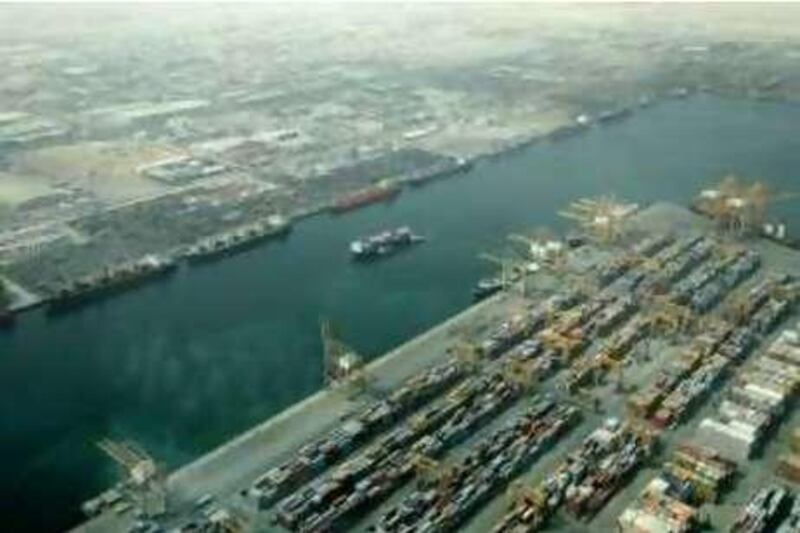ABU DHABI // Non-oil exports from Abu Dhabi skyrocketed by 57 per cent in the first quarter of this year, fuelled by shipments of plastic and rubber, metals and audiovisual equipment, the Department of Planning and Economy said yesterday. The rate of growth in non-oil exports was double the growth of Abu Dhabi's imports, which was 26 per cent. The total value of imports still dwarfed exports by 12 times.
Increasing non-oil exports is a long-term goal of the Emirate, where public finances are now dominated by oil export receipts. By 2025, the Government hopes the non-oil sector will account for more than half of all economic activity. Re-exports, which is a separate category of trade involving goods imported to duty-free warehouses and shipped to third countries, grew by 13.6 per cent in the first three months of the year, according to the report issued by the department.
Foreign trade as a whole, excluding oil and gas, grew by 27 per cent in the first quarter to Dh22.5 billion (US$5.9bn). The growth of Abu Dhabi's foreign trade is, in part, attributed to "its strategic location in the GCC region and its proximity to the east Asian markets", the report said. Saudi Arabia is the emirate's top trade partner for non-oil goods, with Japan, Germany and the US also figuring prominently.
"The UAE economy last year grew by 7.4 per cent so with that growth, they need to get the likes of heavy machinery and basic construction material and capital equipment to continue with their growth," said Mary Nicola, an economist with Standard Chartered Bank. "Obviously they tend to turn to places like Japan and Germany for that kind of equipment." Last year, Saudi Arabia was the largest trade partner for non-oil goods with a total figure of Dh10bn, up from Dh8.3bn in 2006. Among the most imported products from Saudi Arabia are audiovisual devices, plastic and rubber products and metals. "Since there are no trade barriers between the GCC countries, it is inevitable that the largest economy in the region would be heavily trading with one of the fastest growing economies in the region," added Ms Nicola.
Japan, Germany, the US and Italy each exported an estimated Dh6bn to the emirate. China showed the most significant increase in trade activity with Abu Dhabi between 2006 and last year, and the report indicates that this trend will continue in this year. China's trade with Abu Dhabi was estimated at Dh1.8bn last year. "The East-East Trade Corridor is becoming largely important, especially as the rest of the world slows down," said Ms Nicola. "China has this insatiable appetite for oil and they are getting more of that from here."
Audio-visual equipment is the most imported item from all of the top five import partners except Japan, whose exports are 63 per cent dominated by transport equipment. Japan is home to Toyota, the car manufacturer. Other major imported goods include transport equipment, which represents 19 per cent of total imports, followed by ordinary metals, which represents 17 per cent of imported trade. Food and soft commodities are significantly imported as well. Various factors, including limited water and agricultural land, force countries in the GCC to rely heavily on imported food items. The UAE imports nearly 85 per cent of its food, worth an estimated Dh11.01bn annually.
Recording and audio/visual devices account for the most re-exported product, accounting for Dh2.1bn last year. The report said 56.6 per cent of imports were conducted through sea ports while 28 per cent merchandise passed land borders and 15 per cent were through air freight. @Email:vsalama@thenational.ae





